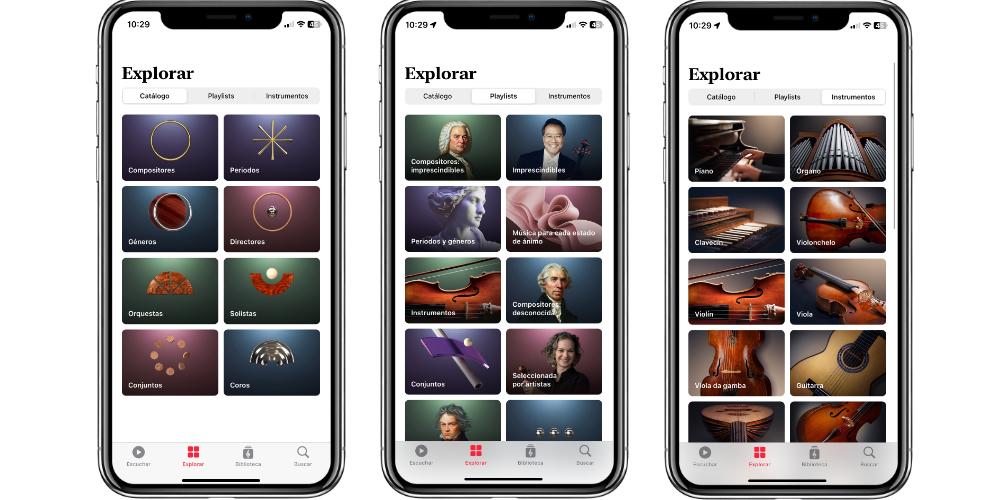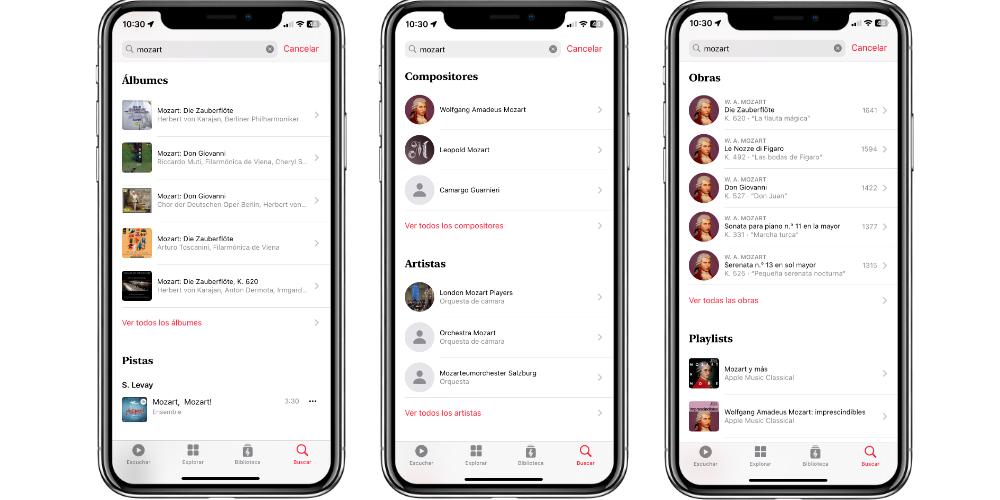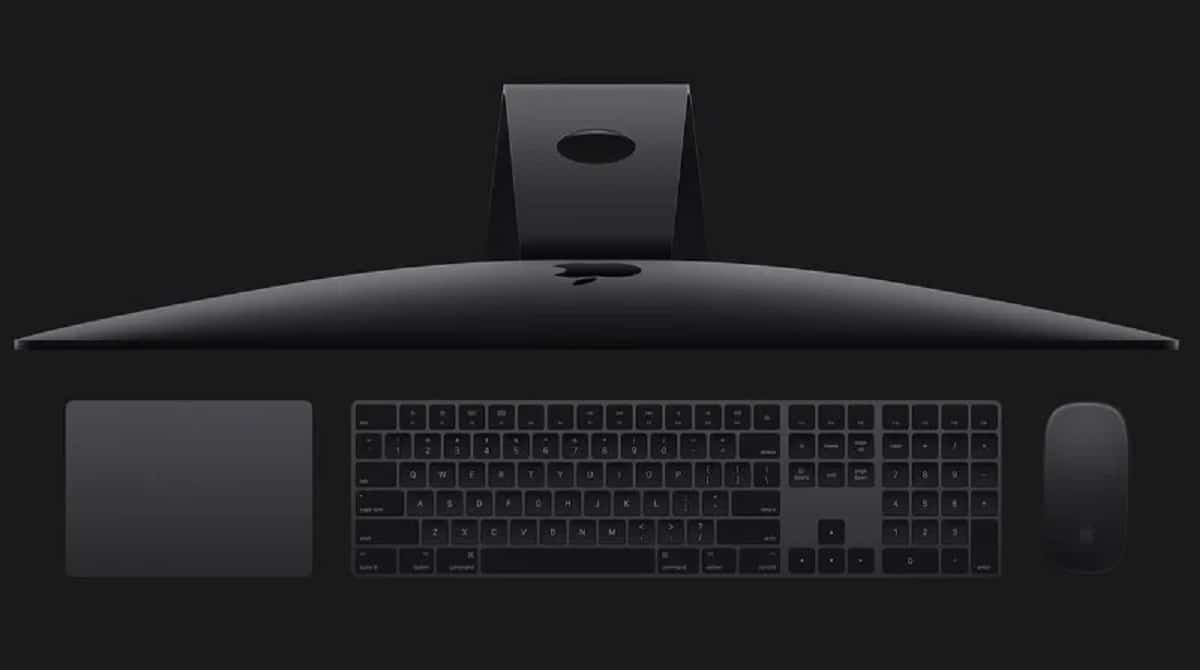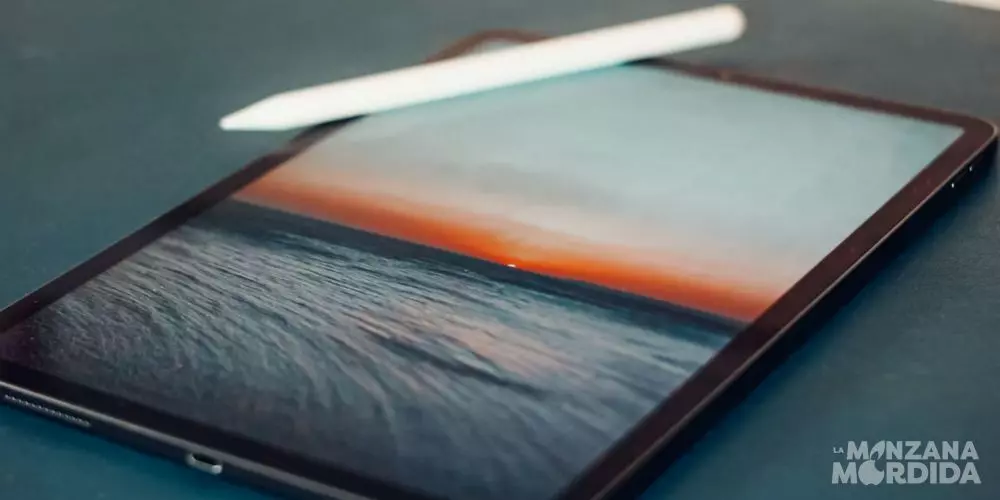
Apple Music Classical is Apple’s new streaming music service, and beyond classical music, it brings a ton of exclusive features tailored to the genre. That is why in this post we are going to explain how search filters worksince these differ from those that we could already use in the Apple Music app.
Searching for classical music is much more accurate
The classical music genre has been the central axis through which the entire interface of Apple Music Classical has revolved. In fact, one of the most distinguishable elements (among others) are content searches. In this case we have a completely redesigned search interface, through which you can search for content in two different ways. Since, in addition, the search filters have changed.
The first of Apple Music Classical’s search filters is on the Explore tab. In this case we have three differentiated areas through which we can search for musical pieces. The three main categories are Catalog, Playlists and Instruments. And within each of these areas, we have available a series of criteria with which to find the works we want. These filters are the following:
- Catalogue:
- composers
- periods
- Genders
- directors
- orchestras
- soloists
- sets
- Choirs
- Playlists:
- Composers: essential
- essential
- Periods and genres
- Music for every mood
- Instruments
- Composers: unknown
- sets
- Selected by artists
- Beethoven by genre
- more playlists
- Instruments:
- Piano
- Organ
- Clavecin
- Cello
- Fiddle
- Viola
- Viola da gamba
- Guitar
- Lute
- Double bass
- Harp
- Trumpet
- Trunk
- Trombone
- Clarinet
- Oboe
- Flute
- Bassoon
- recorder
- saxophone
- Percussion
- Soprano
- Mezzo-soprano
- countertenor
- Tenor
- bass-baritone
The Explore tab is just one way to search for content. Within each category we will find different works, pieces and composers. But if we want do a manual search, the Search tab also has dedicated filters. If in the Apple Music application we see the songs and the artists, but in this case, we have more result criteria available. These content search criteria are as follows:
- composers
- Artists
- Plays
- Playlists
- albums
- Tracks
Again, within each category and section we will have available the content related to each search we have done. When we write what we want to search for, we can put names of performers, composers, musical groups (such as orchestras), etc. So that, the search interface is 100% adapted to the genre of classical music.
As you can see, this is one of the reasons why Apple Music Classical is a separate and independent app from the main Apple Music service. At the moment, it is only available within the Apple ecosystem, more specifically, on the iPhone and iPod Touch. You can enjoy this service at no additional cost, if you already have an Apple Music subscription activated, whether individually, as a family or as a student. In addition, you can also subscribe through the Apple One service package. However, if you have a subscription to the Apple Music Voice plan, you will not be able to enjoy this service. The Voice plan is designed to be used exclusively with voice assistants, and does not allow us to have a graphical interface with our entire music library, for. access through the different devices on which Apple Music is available.




